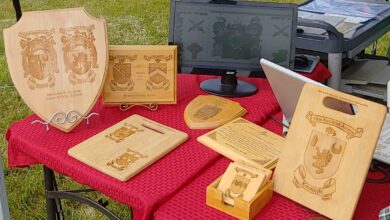We can avoid bad incidents with a few special safety rules. In terms of materials and substrates, here are a few I follow that I have found safe and useful:
- Only laser plastic from industry suppliers – never laser a customer’s plastics. Gases from certain materials can be especially harmful to humans and animals as well as to the laser itself. PVC is one material that releases those bad gases. Many plastics contain PVC and should never be lasered.
- Do not laser cut non-industry supplied plywood. Woods such as plywood, particle board, stand board, and any other engineered woods contain chemicals, especially from glues. It’s not only a safety practice, but I also find hardware store plywood to take much longer to cut due to uneven use of glues.
- Do not use a CO2 laser on non-industry supplied coated metals, nor metals not specifically made for lasering. Coated metals can be trick for a CO2 laser. I have found most anodized metals to laser well. Industry supplied metal products specifically designed for lasering either allow the top coat to be removed, or the lasering turns the metal a contrasting color. Fiber lasers process a wide variety of metals, allowing customer’s products to be lasered with less concern.
-Bob Hagel, Eagle’s Mark




